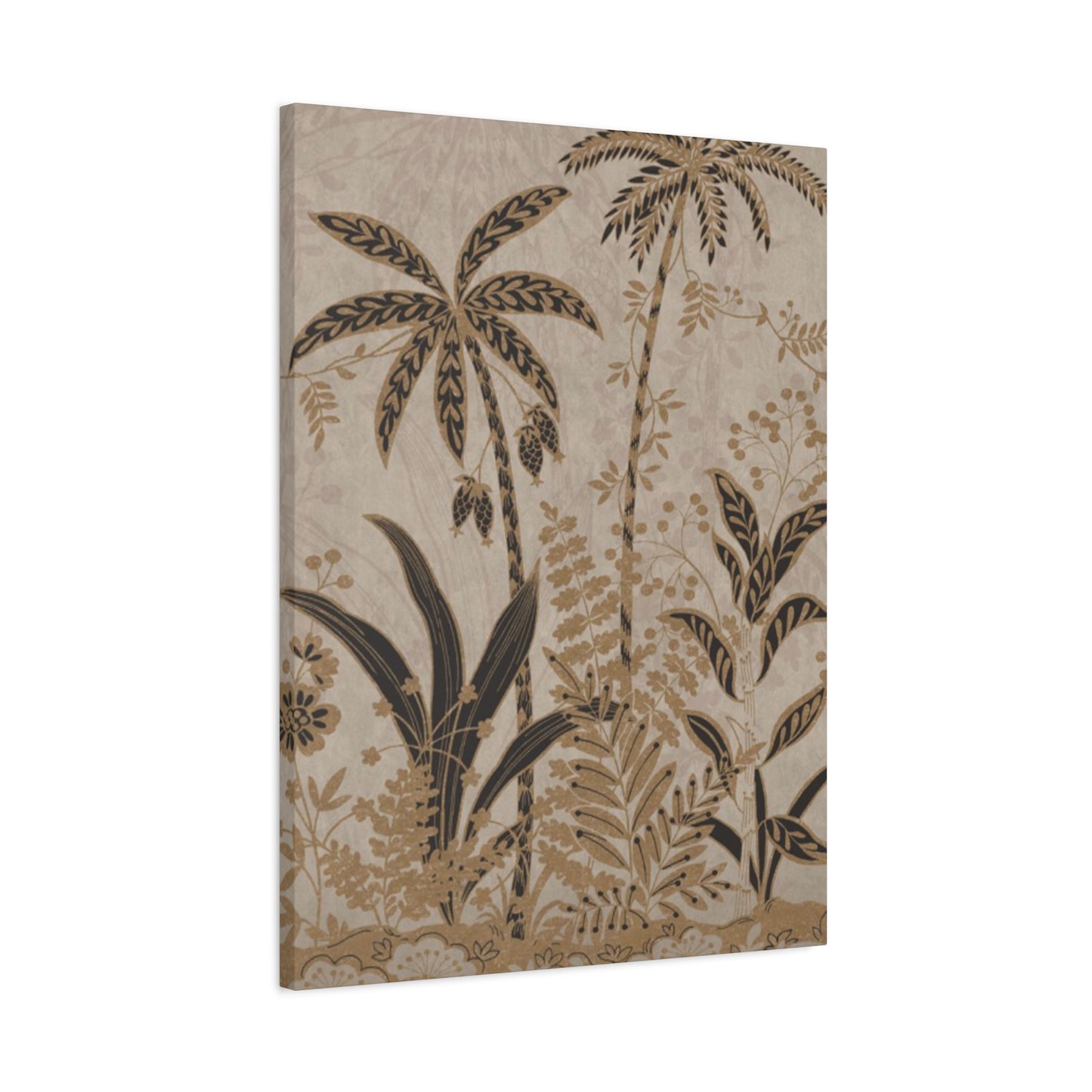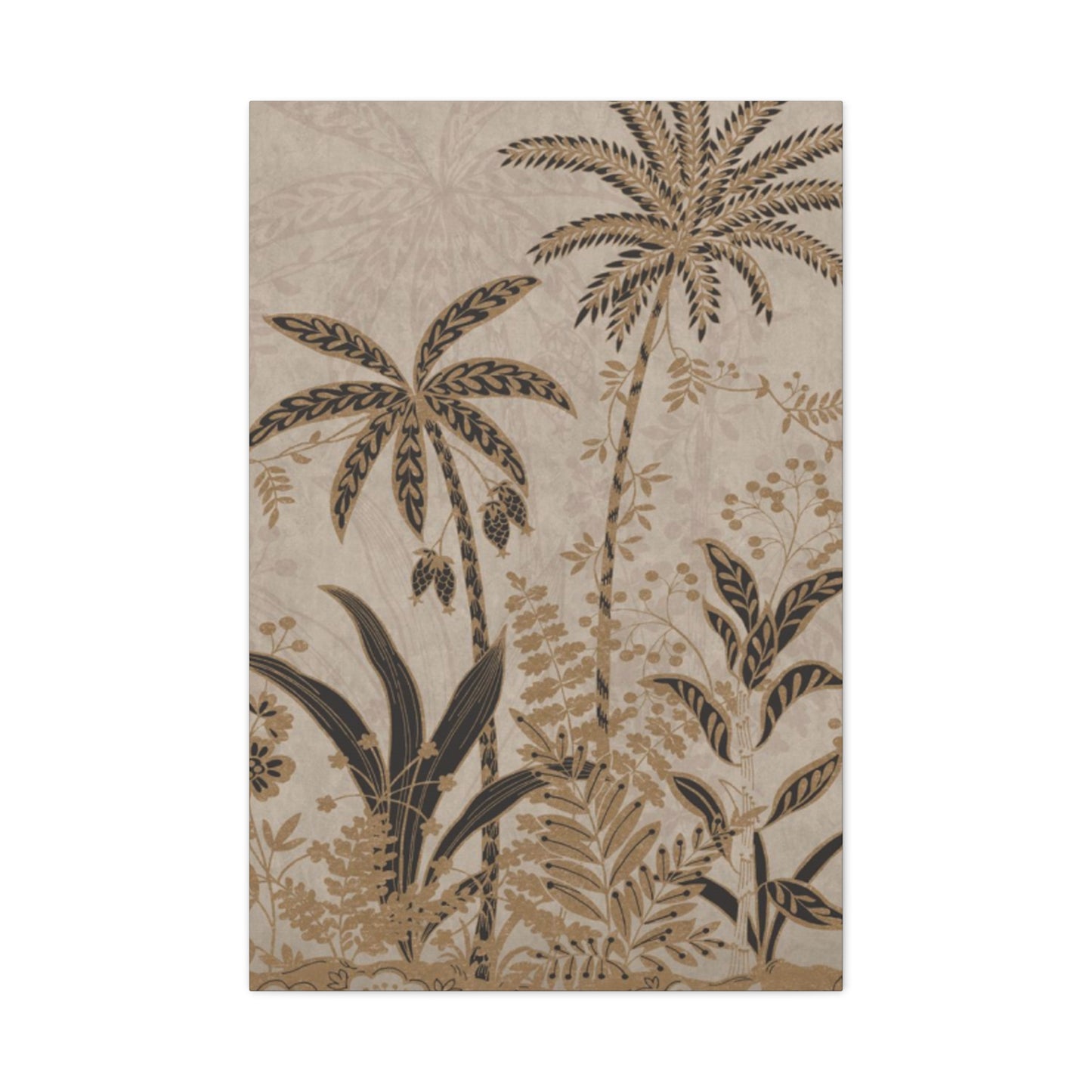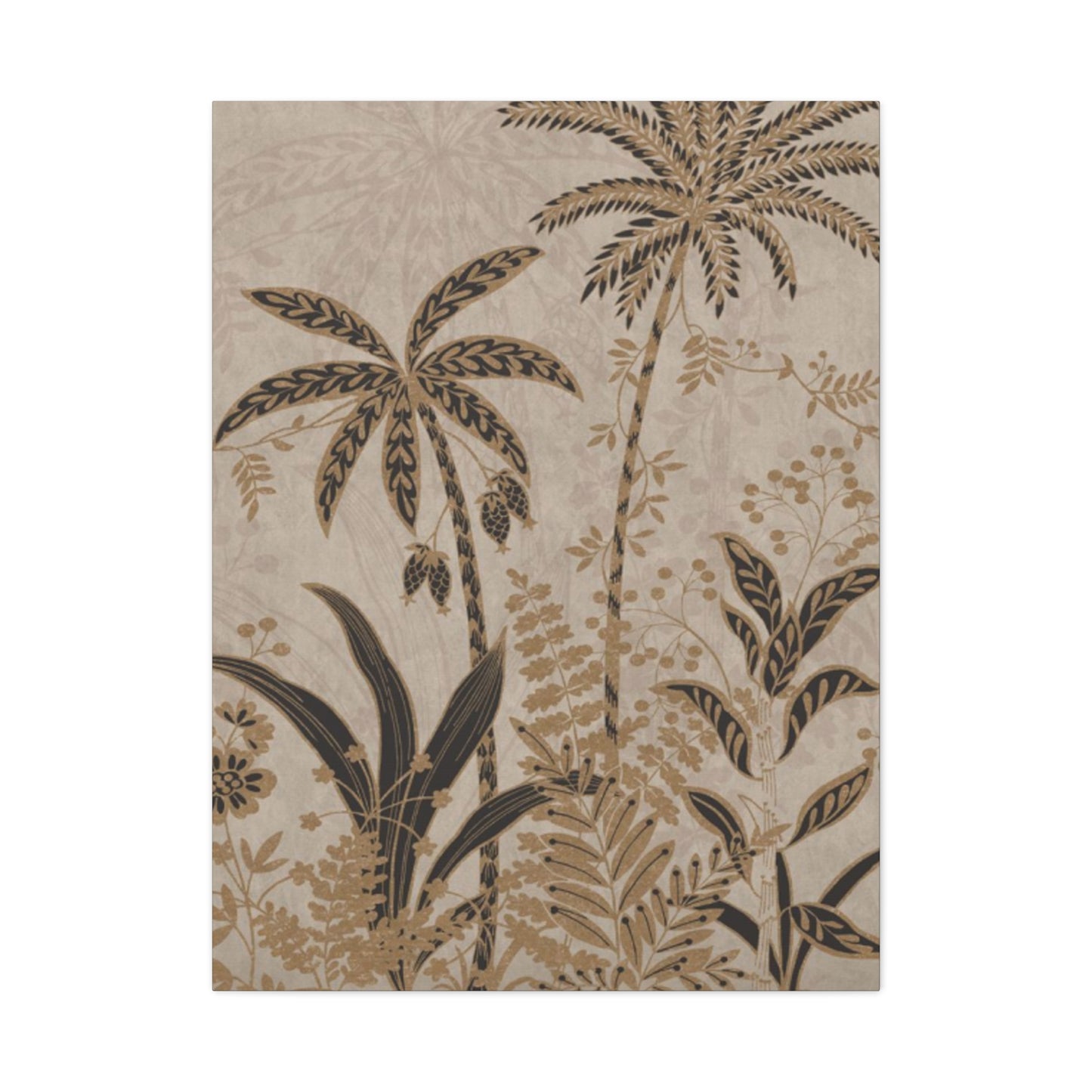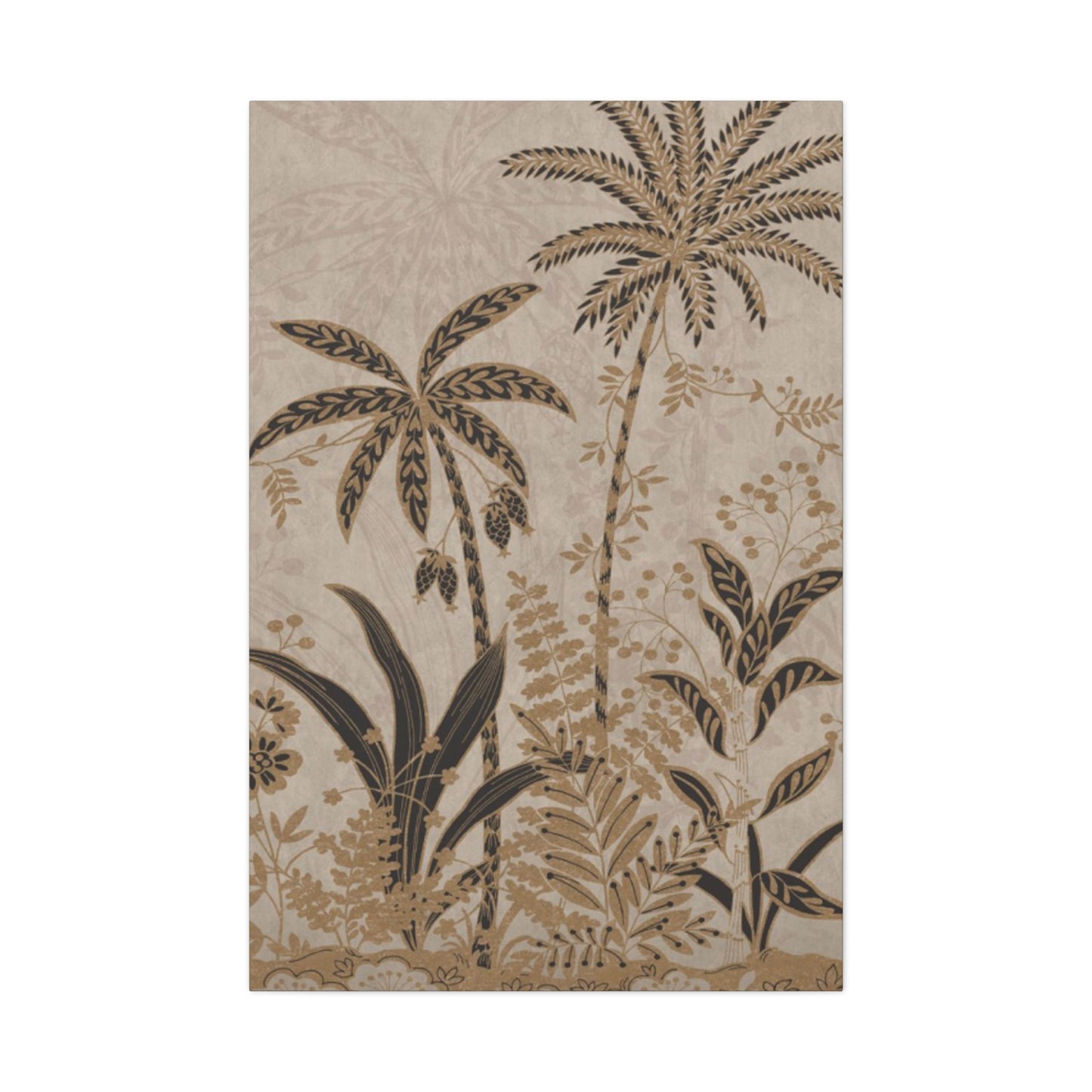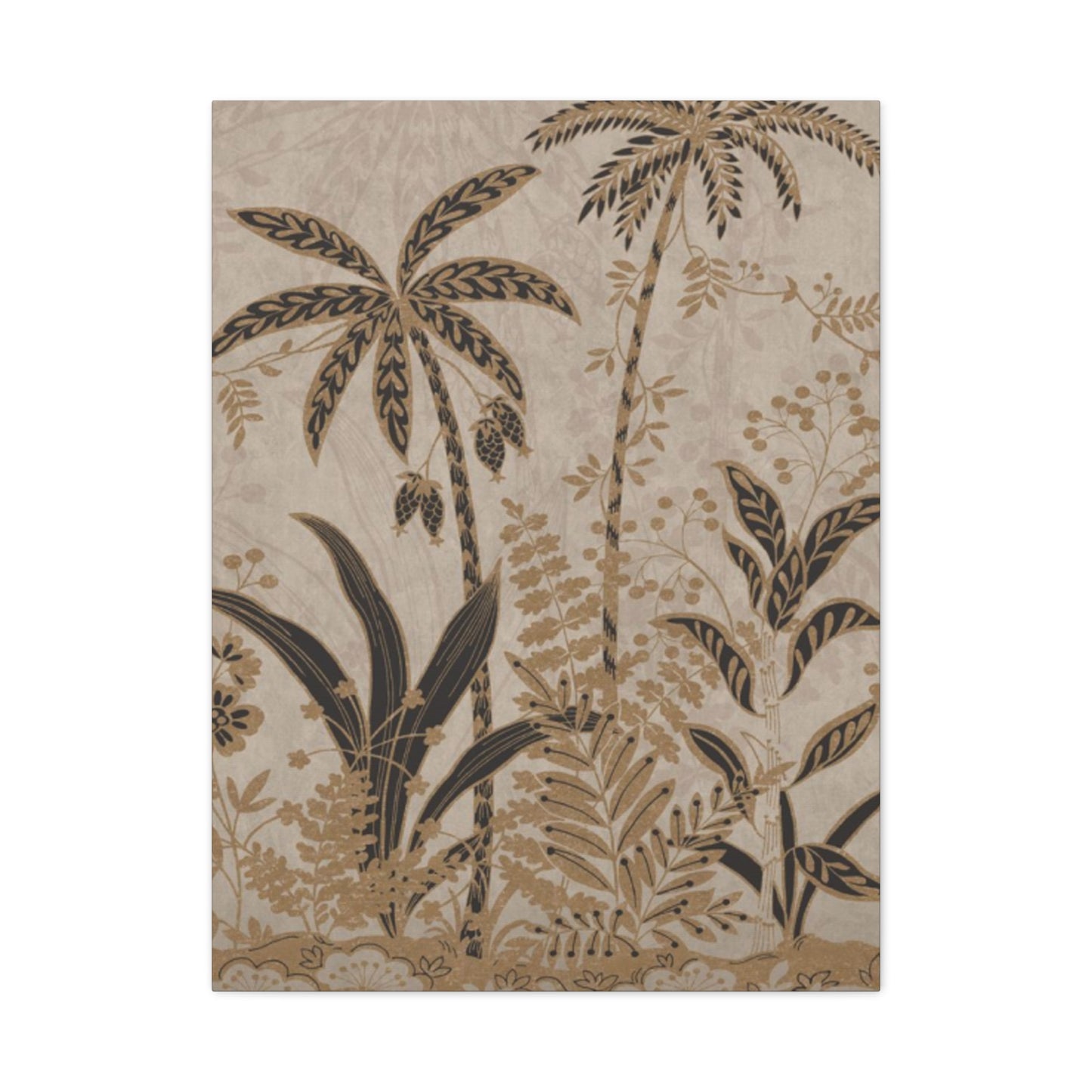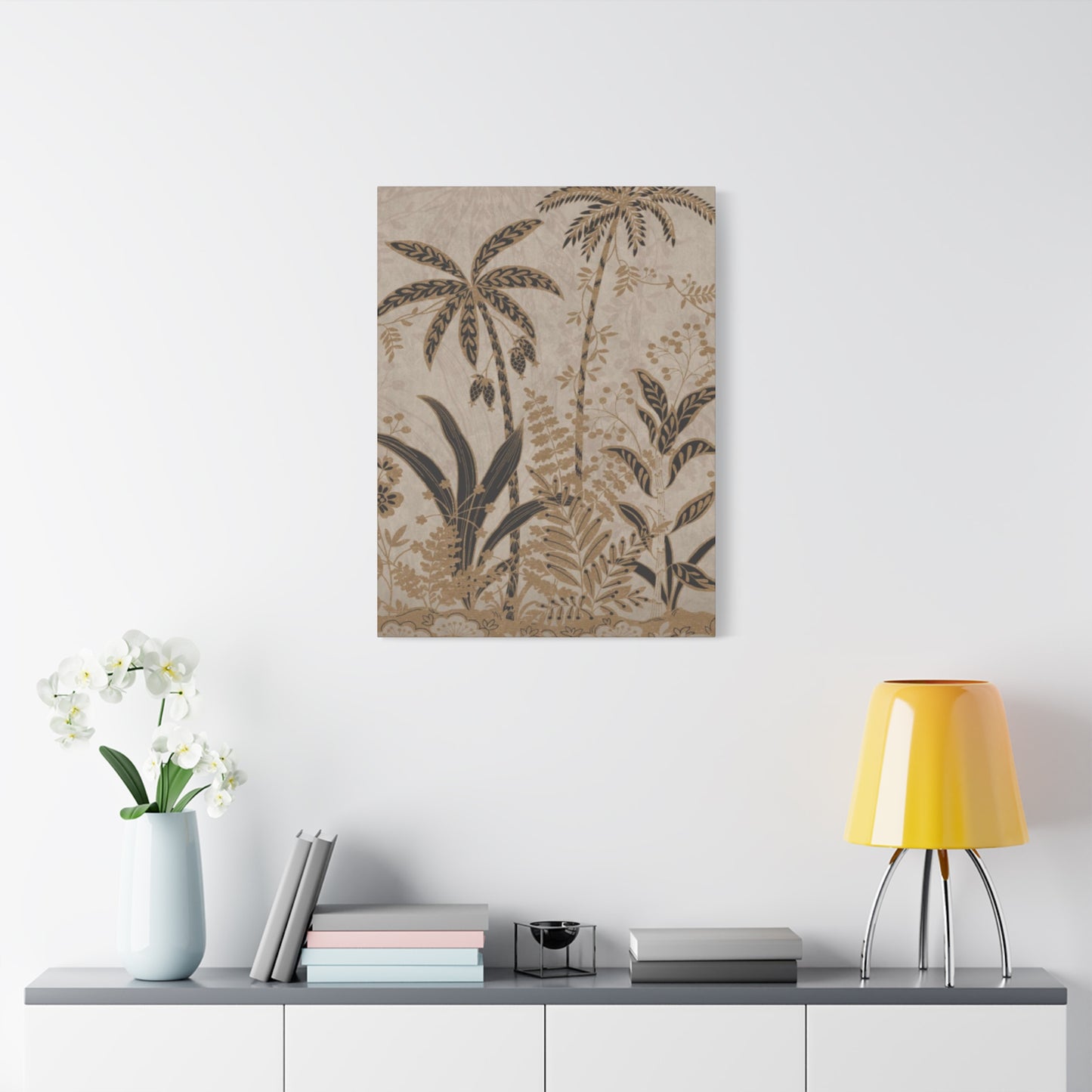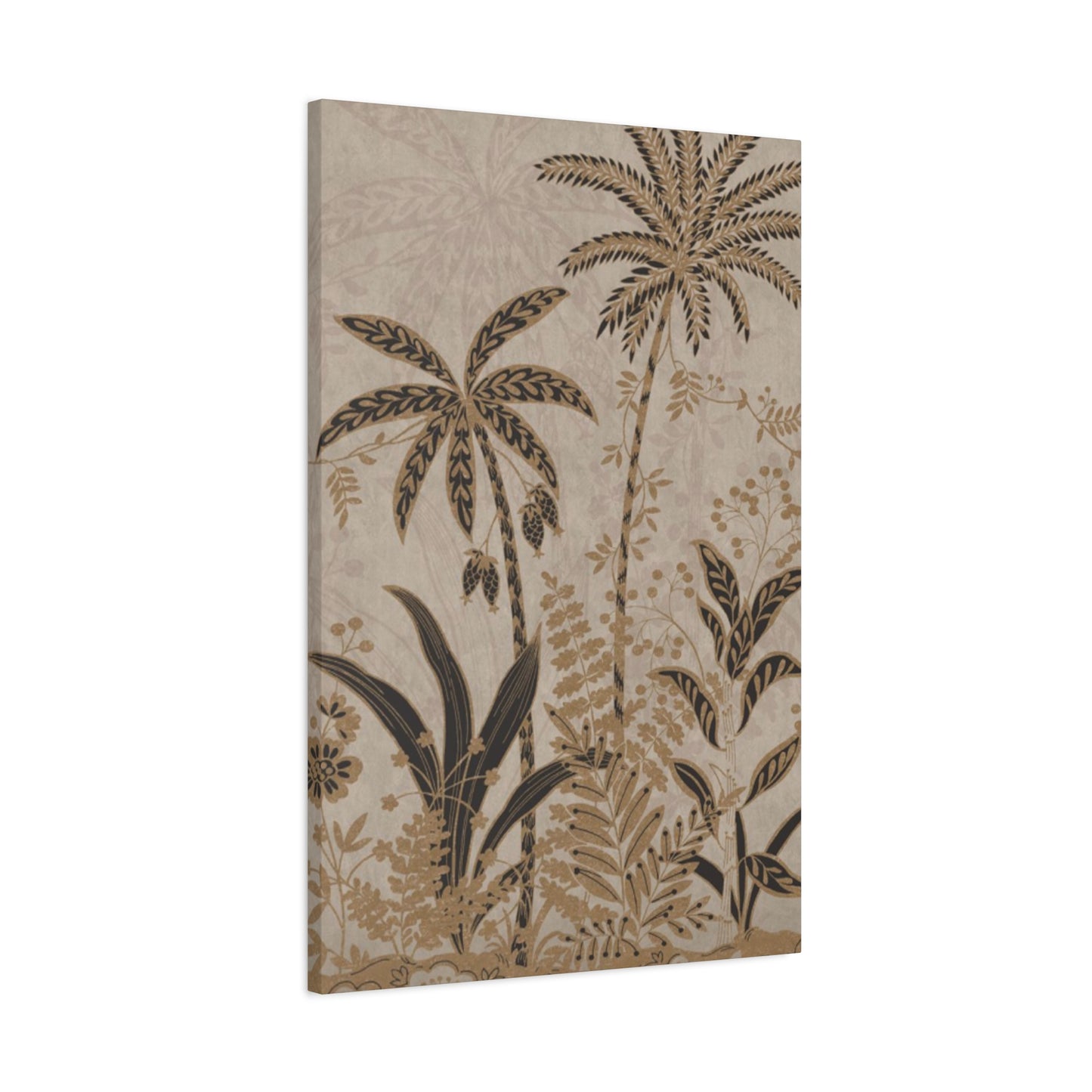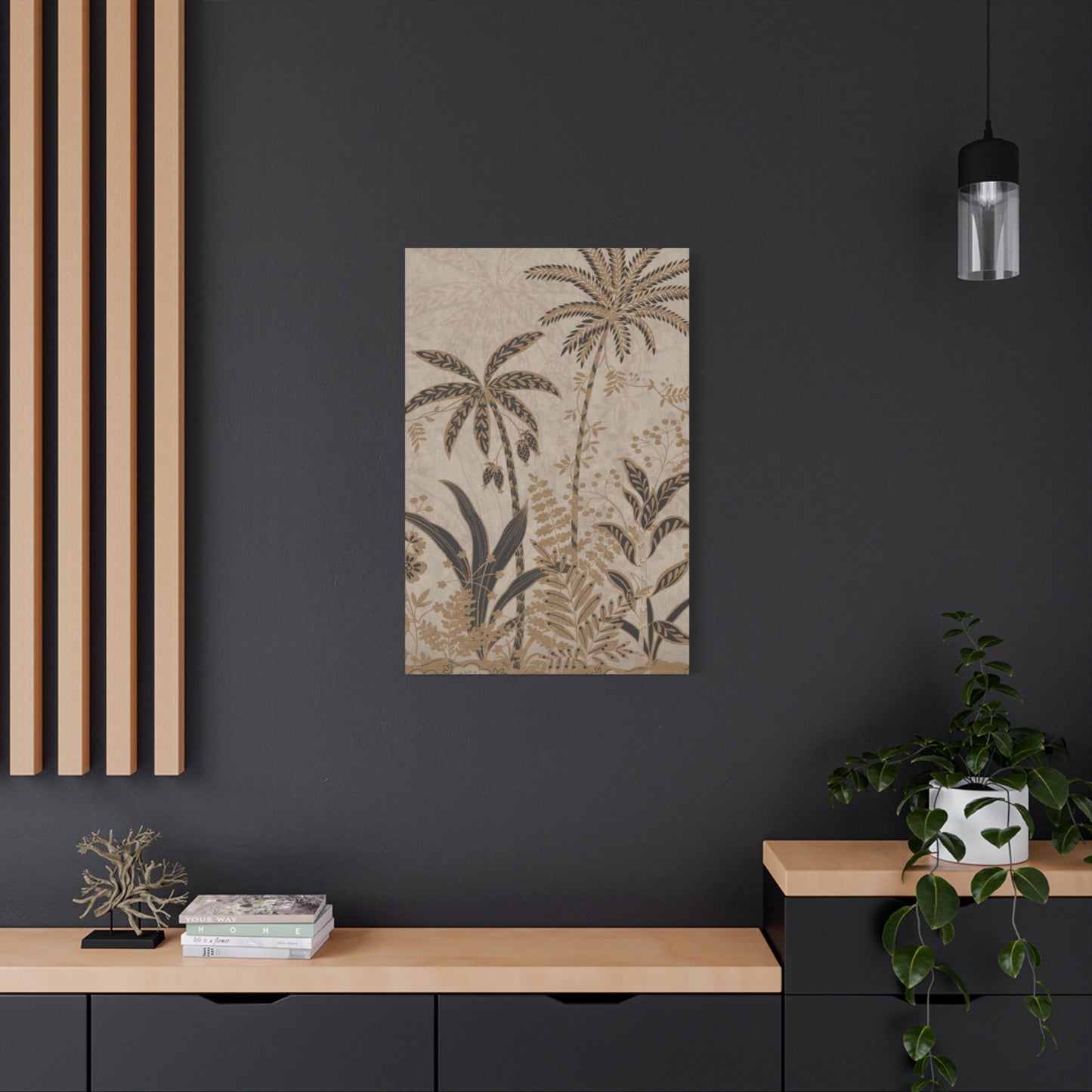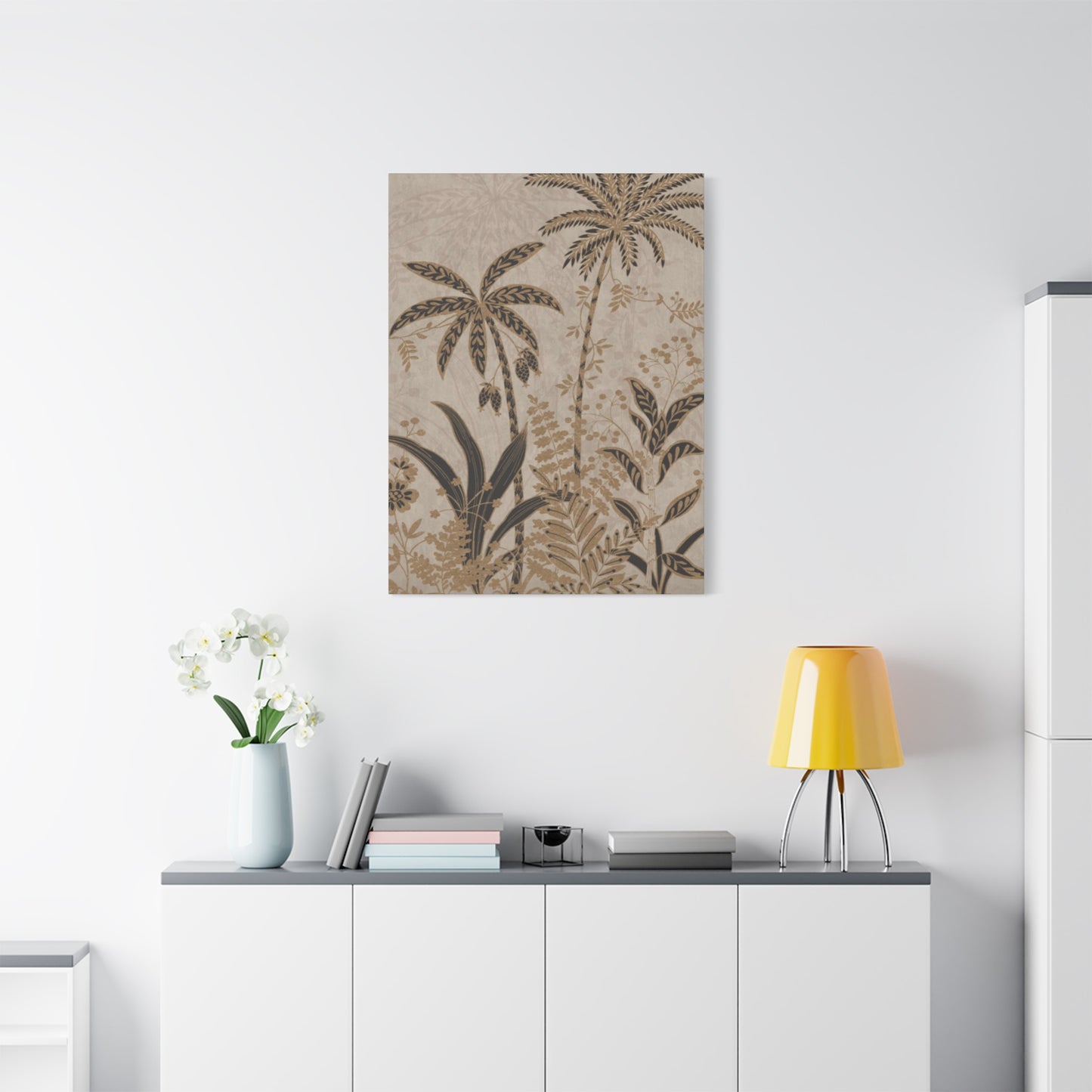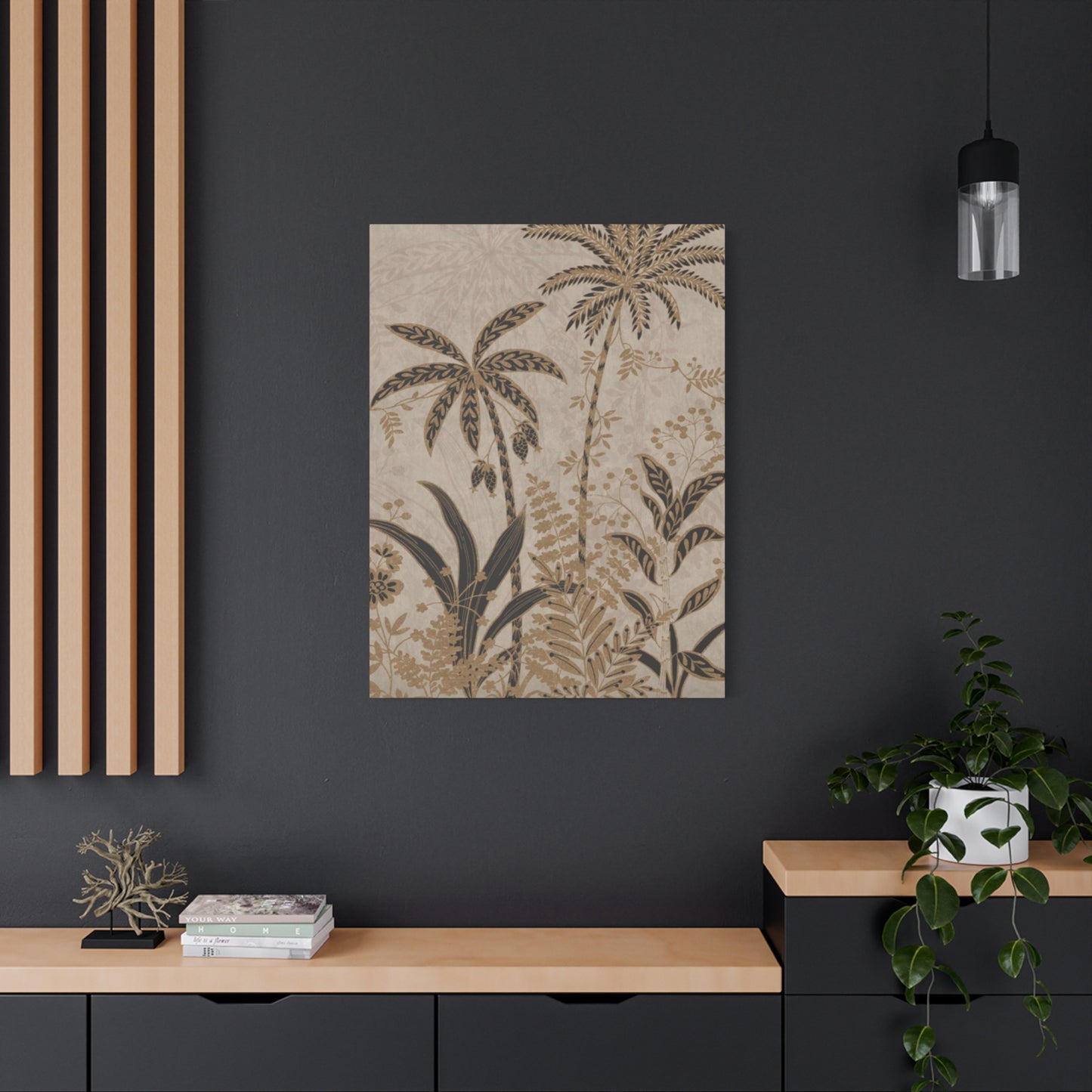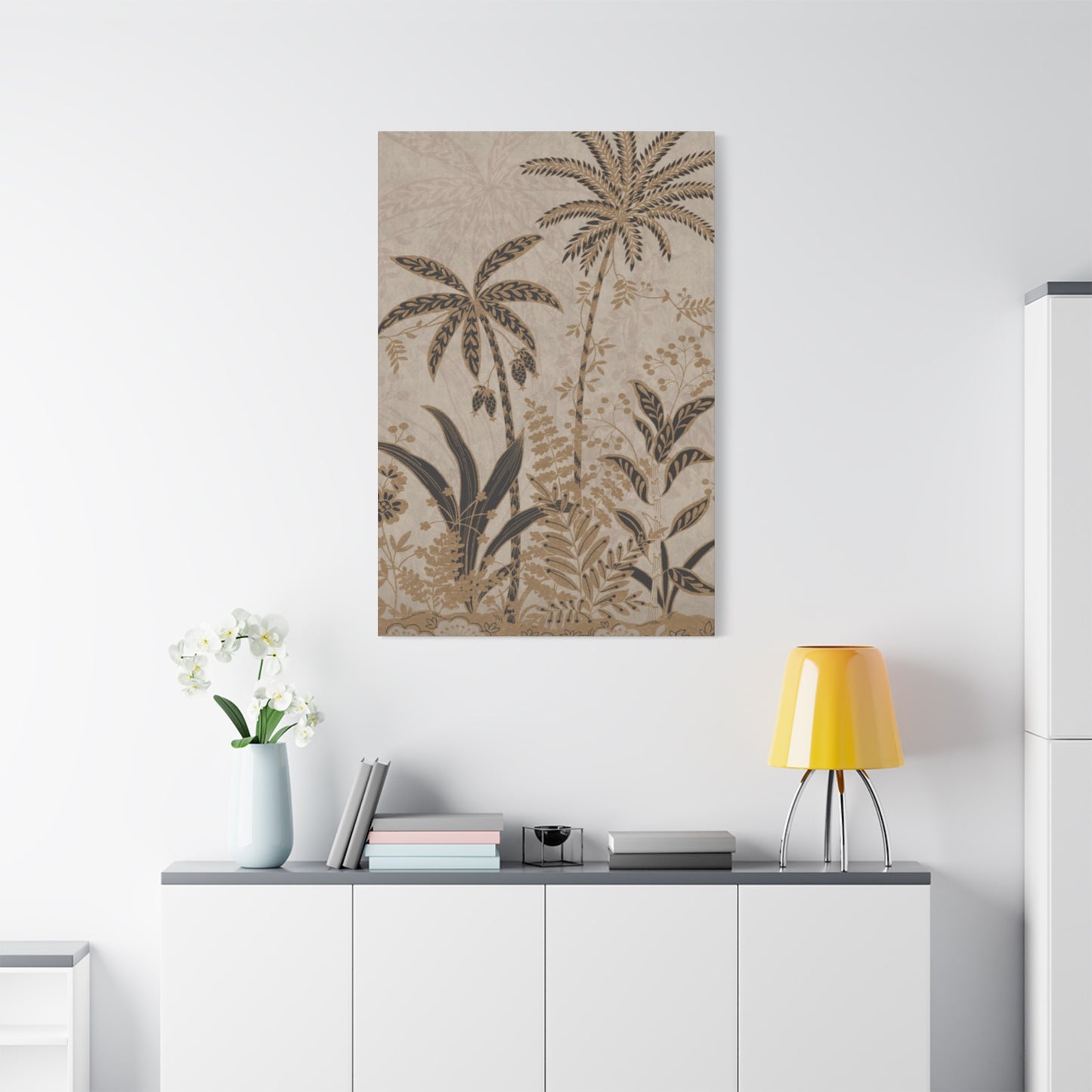Palm Tree Wall Art: Creating Your Personal Tropical Paradise Through Interior Design
The allure of tropical destinations has captivated humanity for centuries, inspiring countless artistic expressions and interior design movements. Among these, palm tree wall art stands as one of the most powerful and versatile decorative elements capable of transforming any living space into a serene, vacation-inspired sanctuary. This comprehensive exploration delves into the multifaceted world of palm tree artwork, examining how these iconic symbols of paradise can revolutionize your home's atmosphere while providing practical guidance for incorporating tropical aesthetics into modern living spaces.
Establishing Your Personal Oasis: The Art of Tropical Interior Design
Creating a tropical-inspired living environment extends far beyond simply hanging a palm tree print on your wall. It involves a carefully orchestrated symphony of design elements that work harmoniously to evoke the essence of coastal paradise. Palm tree artwork serves as the cornerstone of this aesthetic transformation, offering both visual appeal and psychological benefits that can significantly enhance your daily living experience.
The psychology behind tropical design elements reveals fascinating insights into human behavior and well-being. Research in environmental psychology demonstrates that natural imagery, particularly representations of lush vegetation and coastal environments, can reduce stress levels, lower blood pressure, and improve overall mental health. Palm trees, with their graceful fronds and association with vacation destinations, trigger positive emotional responses that can transform your home into a restorative retreat.
When selecting palm tree wall art for your space, consider the various artistic interpretations available. Traditional photographic prints capture the realistic beauty of these majestic trees, offering crisp details and authentic colors that can transport viewers to actual tropical locations. Alternatively, artistic renderings provide stylized interpretations that can complement contemporary design schemes while maintaining the essential tropical essence.
The placement of palm tree artwork requires strategic consideration of lighting conditions, viewing angles, and spatial proportions. Natural light enhances the vibrancy of tropical artwork, making east or south-facing walls ideal locations for maximum visual impact. Consider the scale relationship between your chosen artwork and the surrounding furniture to ensure balanced visual composition that doesn't overwhelm or underwhelm the space.
Color coordination plays a crucial role in successfully integrating palm tree art into existing decor schemes. The natural green palette of palm fronds offers remarkable versatility, complementing warm earth tones, cool blues, and crisp whites equally well. This adaptability makes palm tree artwork an excellent investment for homeowners who enjoy periodically updating their interior color schemes.
Mastering the Atmosphere: Creating Tranquil Environments with Tropical Elements
The transformative power of palm tree prints in creating relaxing atmospheres cannot be overstated. These artistic elements possess an inherent ability to slow down the pace of modern life, encouraging contemplation and peaceful relaxation. The gentle curves of palm fronds naturally guide the eye in flowing movements, creating visual rhythm that promotes mental calmness and reduces visual stress.
Color psychology plays a fundamental role in how palm tree artwork affects our emotional state. The predominant green hues found in palm tree imagery are scientifically proven to have calming effects on the human psyche. Green is associated with nature, growth, and renewal, triggering subconscious associations with outdoor environments and natural healing processes. This makes palm tree art particularly effective in spaces dedicated to rest and relaxation.
The texture and movement implied in palm tree artwork contribute significantly to its relaxing qualities. Even in static prints, the suggestion of gentle swaying fronds can evoke memories of ocean breezes and peaceful moments spent in natural settings. This psychological phenomenon, known as embodied cognition, allows viewers to experience physical sensations through visual stimuli alone.
Lighting considerations become particularly important when using palm tree art to create relaxing environments. Soft, diffused lighting enhances the contemplative qualities of tropical artwork, while harsh, direct illumination can create unwanted visual tension. Consider installing dimmer switches or using table lamps with warm-toned bulbs to create optimal viewing conditions for your palm tree displays.
The scale and proportion of palm tree artwork directly influence its calming effect. Oversized pieces can create dramatic focal points that command attention, while smaller prints allow for more subtle integration into existing decor schemes. Multiple smaller pieces arranged in cohesive groupings can create visual interest without overwhelming the space, offering flexibility for future rearrangements.
Sound considerations often overlooked in interior design discussions can enhance the relaxing atmosphere created by palm tree artwork. The visual suggestion of tropical environments pairs beautifully with ambient sounds of ocean waves, gentle rain, or tropical bird songs. This multi-sensory approach to interior design creates more immersive and effective relaxation experiences.
Coastal Living Redefined: Integrating Tropical Elements in Modern Interiors
Contemporary coastal interior design has evolved significantly from traditional nautical themes, embracing more sophisticated and nuanced approaches to tropical aesthetics. Modern coastal styling incorporates palm tree art as a central element while balancing contemporary furniture, clean lines, and minimalist principles. This evolution reflects changing lifestyle preferences and design sensibilities that favor understated elegance over literal interpretation.
The key to successful coastal styling with palm tree art lies in achieving the right balance between tropical elements and contemporary design principles. Clean, uncluttered spaces provide the perfect backdrop for impactful palm tree artwork, allowing these natural elements to shine without competing with busy patterns or excessive decorative accessories. This approach creates sophisticated environments that feel both current and timeless.
Material selection plays a crucial role in modern coastal interior design. Natural materials such as reclaimed wood, bamboo, rattan, and natural fiber textiles complement palm tree artwork beautifully while reinforcing the connection to natural environments. These materials add texture and warmth to spaces while maintaining the clean aesthetic lines favored in contemporary design.
Color palettes in modern coastal design tend toward neutral backgrounds with strategic use of tropical accent colors. Soft whites, warm beiges, and gentle grays provide sophisticated foundations that allow palm tree artwork to serve as natural focal points. Strategic placement of tropical colors through artwork, pillows, or accessories creates visual interest without overwhelming the overall design scheme.
Furniture selection for coastal interiors styled with palm tree art should emphasize comfort and natural materials. Low-profile seating arrangements encourage relaxation while maintaining visual openness that complements tropical artwork. Incorporating furniture with organic curves or natural textures reinforces the connection to natural environments suggested by palm tree imagery.
Lighting design in coastal interiors requires careful attention to both natural and artificial illumination. Maximizing natural light enhances the connection to outdoor environments while showcasing tropical artwork to best advantage. Layered artificial lighting using multiple sources creates depth and ambiance that supports the relaxing atmosphere promoted by palm tree art.
Tropical Transformation: Bringing Paradise to Every Living Space
The versatility of palm tree wall art enables successful integration into virtually any room within your home, each application offering unique benefits and design opportunities. Living rooms serve as natural showcases for large-scale palm tree artwork, creating impressive focal points that establish the overall aesthetic tone for adjoining spaces. The social nature of living areas makes them ideal locations for conversation-starting tropical art that reflects your personal style and travel experiences.
Dining areas benefit tremendously from palm tree artwork that enhances the sensory experience of shared meals. The calming influence of tropical imagery promotes relaxation and enjoyable conversation, while the natural associations with abundance and hospitality create welcoming environments for guests. Consider positioning palm tree art where it can be appreciated during meals without becoming a distraction from social interaction.
Kitchen spaces, often overlooked for decorative artwork, can be dramatically enhanced by strategically placed palm tree prints. Smaller format pieces work well in kitchen environments where space constraints and practical considerations limit options for large artwork. The natural associations with fresh ingredients and healthy living complement palm tree imagery beautifully, creating cohesive design narratives throughout cooking and dining areas.
Home offices and workspaces gain significant benefits from palm tree artwork that provides mental escape from professional pressures. The psychological associations with vacation and relaxation can help reduce work-related stress while improving concentration and creativity. Position tropical artwork within your line of sight during work periods to provide periodic visual breaks that refresh and rejuvenate mental energy.
Bathroom spaces offer unique opportunities for palm tree art that reinforces the spa-like qualities of personal care routines. The humidity resistance of properly framed artwork makes bathrooms suitable for tropical themes that transform utilitarian spaces into personal retreat areas. Consider the intimate nature of bathroom spaces when selecting artwork scale and subject matter for maximum comfort and privacy.
Hallways and transitional spaces benefit from palm tree artwork that creates visual continuity throughout your home's interior design scheme. These areas offer opportunities to experiment with different scales and arrangements of tropical art while maintaining consistent aesthetic themes that unify your living environment.
Sophistication Meets Serenity: Elevating Interiors with Natural Beauty
The elevation of interior spaces through palm tree decor requires thoughtful consideration of artistic quality, presentation methods, and integration strategies that enhance rather than diminish existing design elements. High-quality palm tree artwork possesses the power to transform ordinary rooms into extraordinary spaces that reflect sophisticated design sensibilities while maintaining comfortable, livable atmospheres.
Investment in quality artwork pays dividends in both aesthetic impact and longevity of design appeal. Professional photography, fine art prints, and original artwork offer superior visual impact compared to mass-produced reproductions, providing distinctive character that reflects personal taste and design sophistication. Consider palm tree artwork as long-term investment pieces that will appreciate in both monetary and aesthetic value over time.
Framing and presentation techniques significantly influence the perceived quality and impact of palm tree artwork. Professional matting and framing protect artwork while enhancing its visual presence through appropriate border treatments and material selections. Consider frame materials and colors that complement both the artwork and surrounding decor elements for cohesive visual integration.
Gallery-quality hanging systems and proper positioning ensure that palm tree artwork displays to maximum advantage while protecting valuable pieces from environmental damage. Professional installation may be warranted for valuable or heavy pieces, ensuring both security and optimal presentation that reflects the investment made in quality artwork.
Lighting design specifically tailored to showcase artwork enhances both visual impact and preservation of valuable pieces. Picture lights, track lighting, or strategic placement relative to natural light sources can dramatically improve the viewing experience while protecting artwork from harmful UV radiation that causes fading and deterioration over time.
Conservation considerations become important factors when investing in quality palm tree artwork, particularly for pieces intended as long-term design elements. Proper humidity control, temperature stability, and protection from direct sunlight preserve artwork while maintaining optimal viewing conditions that showcase these investments to best advantage.
Canvas Artistry: The Appeal of Beachy Aesthetics in Home Design
Canvas prints represent one of the most popular and versatile formats for palm tree artwork, offering exceptional visual impact while remaining accessible to a broad range of design budgets and aesthetic preferences. The texture and depth inherent in canvas presentations enhance the natural qualities of palm tree imagery, creating more engaging and tactile visual experiences that complement coastal design themes.
The production quality of canvas prints has improved dramatically in recent years, with advanced printing technologies creating museum-quality reproductions that rival traditional printing methods in color accuracy and detail resolution. This technological advancement makes high-quality palm tree canvas art accessible to homeowners who previously couldn't afford original artwork or limited-edition prints.
Size options in canvas prints provide unprecedented flexibility for interior design applications. From intimate gallery walls featuring multiple small canvases to dramatic oversized statement pieces that dominate entire wall spaces, canvas formats accommodate virtually any design vision or spatial constraint. This scalability makes canvas prints particularly valuable for homeowners who may relocate or redecorate frequently.
The durability advantages of canvas prints make them particularly suitable for coastal-themed interiors where humidity and temperature variations might affect other artwork formats. Properly sealed canvas prints resist moisture damage while maintaining color stability under various environmental conditions, making them practical choices for bathrooms, kitchens, or homes in humid climates.
Custom canvas printing services enable personalization opportunities that transform personal photographs into professional-quality wall art. Homeowners can commemorate special vacation memories or create unique artistic interpretations of favorite tropical destinations through custom canvas production, resulting in truly personal design elements that hold special meaning beyond their aesthetic appeal.
Installation simplicity represents another significant advantage of canvas prints over traditional framed artwork. Ready-to-hang canvas prints eliminate the need for professional installation while reducing the risk of damage during mounting procedures. This accessibility encourages experimentation with different arrangements and locations until optimal placement is achieved.
Contemporary Fusion: Blending Traditional Tropical Elements with Modern Design
The successful integration of palm tree art within modern coastal design themes requires nuanced understanding of both traditional tropical aesthetics and contemporary design principles. Modern coastal styling moves beyond literal interpretation of beach house decor, instead embracing sophisticated approaches that suggest tropical environments through subtle design cues and refined artistic selections.
Color palette development for modern coastal interiors featuring palm tree art tends toward monochromatic or limited color schemes that emphasize texture and form over bold tropical colors. Neutral backgrounds allow palm tree artwork to provide natural color accents while maintaining the clean, uncluttered aesthetic preferred in contemporary design. This approach creates sophisticated environments that feel fresh and current while honoring tropical design traditions.
Furniture selection for modern coastal spaces requires careful balance between comfort and contemporary styling. Clean-lined pieces with organic curves or natural material accents complement palm tree artwork while maintaining visual coherence with modern design principles. Avoid overly literal interpretations of tropical furniture that might compete with or overwhelm subtle palm tree art displays.
Textile integration offers opportunities to reinforce tropical themes suggested by palm tree artwork through subtle pattern and texture selections. Natural fiber materials, organic textures, and understated tropical motifs create layered design narratives that support palm tree art without creating visual competition or thematic confusion.
Metallic accents in modern coastal design can enhance palm tree artwork through strategic use of materials that suggest tropical environments. Brass, bronze, or copper elements evoke warm sunlight and tropical atmospheres while maintaining compatibility with contemporary design aesthetics. These metallic touches can appear in lighting fixtures, hardware, or decorative accessories that support the overall design theme.
Architectural elements play crucial roles in modern coastal design that incorporates palm tree art. Large windows, sliding doors, and open floor plans maximize natural light and indoor-outdoor connections that reinforce the tropical themes suggested by palm tree artwork. Consider architectural modifications that enhance the integration between interior tropical elements and actual outdoor environments.
Bedroom Sanctuaries: Creating Peaceful Retreats with Natural Imagery
Bedroom environments offer unique opportunities for palm tree art that promotes restful sleep and peaceful awakening experiences. The private nature of bedrooms allows for more personal artistic expressions while the emphasis on relaxation makes tropical imagery particularly appropriate for these intimate spaces. Palm tree artwork in bedrooms serves both decorative and therapeutic functions, contributing to improved sleep quality and general well-being.
Positioning considerations for bedroom palm tree art should account for viewing angles from bed positions, ensuring that artwork enhances rather than disrupts the sleep environment. Avoid placing stimulating or highly detailed artwork directly opposite the bed where it might interfere with the visual quiet needed for restful sleep. Instead, consider side wall positions that provide pleasant viewing during daytime hours while remaining visually calm during sleep periods.
Color selection for bedroom palm tree art should emphasize calming, muted tones that promote relaxation and sleep preparation. Soft greens, gentle blues, and warm neutral tones create peaceful atmospheres while avoiding the stimulating effects of bright or highly saturated colors that might interfere with circadian rhythm regulation. These color choices support both aesthetic goals and physiological sleep requirements.
Scale considerations for bedroom artwork require balance between visual impact and peaceful atmosphere. Large-scale pieces can create dramatic focal points without overwhelming intimate bedroom spaces when positioned thoughtfully, while smaller pieces offer flexibility for creating gallery walls or subtle accent displays that enhance without dominating the sleep environment.
Lighting design for bedroom spaces displaying palm tree art should emphasize adjustable illumination that supports both artwork viewing and sleep preparation routines. Dimmer switches, bedside lamps, and strategic natural light control create flexible lighting environments that showcase artwork during active hours while promoting darkness needed for quality sleep.
Personal connection becomes particularly important for bedroom palm tree art selections, as these private spaces should reflect individual preferences and meaningful associations. Choose pieces that evoke positive memories, favorite destinations, or aspirational travel goals that enhance the personal sanctuary quality of bedroom environments.
Escapism Through Design: Wall Decor as Transportation to Paradise
The psychological power of palm tree wall decor to transport viewers to tropical destinations represents one of its most valuable attributes in modern interior design. This phenomenon, known as environmental psychology, demonstrates how visual elements can influence mood, stress levels, and overall well-being through associations with pleasant experiences and desired destinations.
Memory activation through tropical artwork enables homeowners to revisit favorite vacation experiences or cultivate anticipation for future travel adventures. Palm tree imagery triggers specific neural pathways associated with relaxation, adventure, and positive life experiences, creating immediate emotional responses that can improve daily living satisfaction. This psychological benefit extends beyond mere decoration to become a valuable tool for stress management and mood enhancement.
Seasonal depression and winter blues can be significantly alleviated through strategic use of tropical wall decor that provides visual warmth and light during darker months. Palm tree artwork serves as daily reminders of sunny destinations and warm weather, helping combat the psychological effects of reduced daylight and cold temperatures. This therapeutic application of interior design demonstrates the practical benefits of thoughtful decorative choices.
The aspirational quality of tropical wall decor encourages positive visualization and goal-setting behaviors that can improve overall life satisfaction. Displaying images of desired destinations or lifestyle experiences creates daily reinforcement of personal goals while providing motivation for future achievements. This psychological benefit transforms decorative artwork into tools for personal development and life enhancement.
Cultural associations with palm trees across different societies reveal fascinating insights into universal human responses to these iconic plants. From Pacific Island cultures that view palms as symbols of life and prosperity to Caribbean traditions that celebrate palms as representations of resilience and adaptability, these trees carry positive cultural meanings that enhance their decorative appeal across diverse populations.
The meditative quality of palm tree imagery supports mindfulness practices and stress reduction techniques that benefit mental health and overall well-being. The gentle curves and natural patterns found in palm tree art can serve as focal points for meditation or contemplative practices that reduce anxiety and promote emotional balance.
Staycation Aesthetics: Creating Vacation Experiences at Home
The concept of staycations has gained tremendous popularity in recent years, driving increased interest in interior design elements that recreate vacation experiences within domestic environments. Palm tree prints serve as essential components in staycation design strategies, providing visual cues that trigger psychological associations with travel and relaxation without requiring actual departure from home.
Budget-conscious homeowners particularly benefit from staycation design approaches that deliver vacation experiences through strategic interior modifications rather than expensive travel expenditures. Palm tree artwork offers affordable alternatives to costly tropical vacations while providing ongoing enjoyment and stress relief benefits that extend far beyond typical vacation durations.
Creating immersive staycation environments requires attention to multiple sensory elements that work together to replicate tropical destination experiences. Palm tree artwork provides the visual foundation, while complementary elements such as appropriate lighting, sound, scent, and texture create more comprehensive sensory experiences that enhance the illusion of being in tropical paradises.
Seasonal adaptation of staycation environments allows homeowners to modify their interior tropical elements based on weather conditions, personal moods, or specific vacation memories they wish to recreate. Palm tree artwork serves as consistent foundation elements that can be enhanced or modified through seasonal accessories, lighting changes, or complementary decorative additions.
Entertainment area design benefits significantly from staycation concepts that incorporate palm tree art into spaces dedicated to relaxation and social gatherings. Home bars, media rooms, and outdoor living spaces gain tropical character through strategic artwork placement that encourages vacation-like socializing and entertainment experiences.
The psychological benefits of staycation environments extend beyond immediate mood enhancement to include long-term stress reduction and improved work-life balance. Regular exposure to tropical imagery through daily interaction with palm tree artwork provides ongoing psychological benefits that support mental health and general life satisfaction.
Minimalism Meets Nature: Tropical Art in Clean Design Spaces
The integration of palm tree art within minimalist design schemes presents unique opportunities and challenges that require careful consideration of scale, color, and composition principles. Minimalist aesthetics emphasize simplicity, functionality, and visual clarity, making the selection and placement of tropical artwork crucial for maintaining design integrity while introducing natural beauty.
Color harmony becomes particularly critical in minimalist spaces where palm tree art must complement rather than compete with carefully curated neutral palettes. Monochromatic or limited color schemes work best, with palm tree artwork providing subtle natural accents that enhance rather than overwhelm the clean aesthetic preferred in minimalist design approaches.
Scale relationships in minimalist interiors require precise consideration to maintain visual balance between artwork and surrounding negative space. Large-scale palm tree pieces can serve as stunning focal points in minimalist rooms, while smaller works may become lost in expansive neutral environments. The key lies in choosing pieces that command appropriate attention without violating minimalist principles of visual restraint.
Quality over quantity principles fundamental to minimalist design philosophy apply directly to palm tree art selection. Single, high-quality pieces typically work better than multiple smaller works that might create visual clutter inconsistent with minimalist aesthetics. This approach demands higher initial investment but results in more impactful and enduring design solutions.
Functional integration of palm tree art within minimalist spaces should consider practical aspects such as cleaning requirements, space utilization, and flexibility for future design modifications. Minimalist environments benefit from artwork that serves multiple functions or integrates seamlessly with existing furniture and architectural elements.
The psychological benefits of combining natural imagery with minimalist design create powerful synergies that enhance both aesthetic appeal and functional living. Palm tree artwork provides emotional warmth and natural connection that can prevent minimalist spaces from feeling cold or sterile, while minimalist principles allow tropical imagery to achieve maximum visual impact through uncluttered presentation.
Chromatic Harmony: Combining Tropical Elements with Sunset Imagery
The artistic combination of palm tree imagery with sunset themes creates powerful visual narratives that evoke specific times of day and emotional states associated with tropical destinations. This pairing takes advantage of natural color relationships and psychological associations that enhance the impact of both artistic elements while creating more complex and engaging decorative displays.
Color theory principles guide successful combinations of palm tree and sunset artwork, with complementary relationships between the warm oranges and pinks of sunsets and the cool greens of palm foliage creating dynamic visual interest. These natural color combinations reflect actual tropical environments where such scenes occur regularly, lending authenticity to interior design applications.
Emotional impact increases significantly when palm tree artwork incorporates sunset elements that suggest specific times of day and associated activities. Morning sunrise imagery evokes feelings of renewal and fresh beginnings, while evening sunset scenes promote relaxation and peaceful contemplation. These temporal associations allow homeowners to create specific moods and atmospheres that support desired lifestyle experiences.
Compositional strategies for combining palm tree and sunset elements include layered approaches using multiple pieces, single artworks that incorporate both elements, or strategic placement of separate pieces that create visual dialogue across room spaces. Each approach offers different benefits and works better in different spatial configurations and design contexts.
Lighting considerations become particularly important when displaying sunset-themed tropical artwork, as artificial illumination can either enhance or diminish the warm, glowing qualities that make sunset imagery so appealing. Warm-toned lighting supports sunset themes, while cooler lighting may create discord with the warm color temperatures typically found in sunset photography and artwork.
Seasonal appreciation of sunset-themed palm tree art varies throughout the year, with these pieces providing particular comfort during shorter winter days when natural sunset experiences may be limited. The warm colors and tropical associations help combat seasonal mood changes while maintaining year-round decorative appeal that doesn't require seasonal rotation or storage.
Gallery Wall Creation: Curating Collections of Tropical Art
The development of gallery walls featuring tropical prints requires careful planning, artistic sensitivity, and technical execution skills that ensure professional-quality results worthy of the investment in multiple artwork pieces. Gallery walls offer opportunities to create substantial visual impact while showcasing personal artistic taste and travel experiences through cohesive tropical collections.
Planning strategies for tropical gallery walls should begin with comprehensive space assessment, including wall dimensions, lighting conditions, viewing angles, and relationship to surrounding furniture and architectural elements. This preliminary analysis guides subsequent decisions about artwork selection, sizing, and arrangement approaches that will create successful gallery displays.
Artwork selection for tropical gallery walls requires balance between visual coherence and interesting variety that maintains viewer engagement. While palm tree themes provide unifying elements, successful gallery walls often incorporate diverse artistic styles, color variations, and compositional approaches that create visual rhythm and prevent monotony in large displays.
Layout techniques for gallery wall creation range from formal, symmetrical arrangements that emphasize order and classical proportions to organic, asymmetrical compositions that reflect more contemporary design sensibilities. The choice between approaches should consider both the artwork characteristics and the overall interior design style of the surrounding space.
Installation procedures for gallery walls require precise measurement, level placement, and secure mounting techniques that ensure both visual appeal and long-term stability. Professional installation may be advisable for valuable or extensive gallery wall projects, while careful DIY approaches can achieve excellent results for homeowners comfortable with precision measurement and installation procedures.
Maintenance considerations for gallery wall displays include regular cleaning, periodic rearrangement possibilities, and future expansion planning that accommodates growing art collections. Flexible hanging systems and modular approaches enable future modifications without requiring complete reinstallation of entire gallery wall arrangements.
Symbolic Significance: The Cultural and Artistic Meaning of Palm Trees
The symbolic importance of palm trees extends far beyond their decorative appeal, encompassing rich cultural traditions, religious significance, and artistic interpretations that add depth and meaning to their use in contemporary interior design. Understanding these symbolic dimensions enhances appreciation for palm tree artwork while informing more thoughtful selection and placement decisions.
Historical significance of palm trees in art traces back to ancient civilizations where these plants represented victory, peace, eternal life, and divine blessing across diverse cultures and religious traditions. Egyptian, Greek, Roman, and biblical references establish palm trees as symbols of triumph over adversity and connection to divine favor, adding spiritual dimensions to contemporary decorative applications.
Cultural variations in palm tree symbolism reveal fascinating differences in how various societies interpret these iconic plants. Pacific Island cultures emphasize themes of life, sustenance, and community interconnection, while Middle Eastern traditions focus on oasis symbolism representing refuge and abundance in harsh environments. These cultural perspectives enrich contemporary appreciation for palm tree imagery.
Artistic movements throughout history have embraced palm tree imagery for different symbolic purposes, from romantic period emphasis on exotic beauty and escape from industrialization to modern movements that use tropical imagery to comment on globalization, environmental concerns, and cultural identity. Contemporary artists continue exploring these themes through various media and interpretive approaches.
Psychological symbolism associates palm trees with concepts of relaxation, vacation, escape from routine, and connection to natural environments that provide restorative experiences. These associations explain the popularity of palm tree artwork in residential settings where stress reduction and emotional well-being represent primary design goals.
Religious and spiritual significance of palm trees appears in multiple faith traditions, from Christian associations with Palm Sunday and victory over death to Islamic traditions that honor date palms as blessed plants providing both material and spiritual sustenance. These religious connections add contemplative dimensions to palm tree artwork appreciation.
Thoughtful Gifting: Selecting Palm Tree Art for Ocean Enthusiasts
The selection of palm tree artwork as gifts for beach lovers requires consideration of personal preferences, existing decor styles, and the symbolic meanings that make such gifts particularly meaningful and appreciated. Thoughtful gift selection demonstrates understanding of the recipient's lifestyle preferences and aesthetic sensibilities while providing lasting reminders of shared experiences or mutual appreciation for coastal environments.
Recipient assessment should consider factors such as existing interior design styles, color preferences, space constraints, and personal connections to specific tropical destinations or beach experiences. Gifts that reflect these personal elements demonstrate thoughtfulness and consideration that enhance the emotional value of artistic presents far beyond their monetary worth.
Price point considerations for palm tree art gifts range from affordable prints suitable for casual gift-giving to investment-quality original artwork appropriate for milestone celebrations or significant life events. Budget-conscious options include high-quality reproductions, while higher-end gifts might feature limited edition prints, original photography, or custom artwork created specifically for the recipient.
Presentation strategies for palm tree art gifts can significantly enhance their impact and perceived value through thoughtful packaging, accompanying materials, and delivery methods that reflect the care invested in gift selection. Professional framing services, custom matting, or beautiful presentation packaging can transform moderately priced artwork into impressive and memorable gifts.
Occasion appropriateness varies for different types of palm tree art gifts, with some pieces better suited for housewarming presents, others for vacation memory commemorations, and still others for retirement gifts that anticipate increased leisure time and travel opportunities. Matching artwork characteristics to specific occasions ensures maximum gift appreciation and utility.
Personal customization options enable gift-givers to create unique presents that reflect specific relationships or shared experiences. Custom printing services can transform personal vacation photographs into professional-quality artwork, while personalized framing or inscription services add individual touches that increase sentimental value and personal connection.
Technical Considerations: Quality, Durability, and Display Methods
The technical aspects of palm tree artwork selection, preservation, and display significantly impact both immediate visual appeal and long-term satisfaction with these decorative investments. Understanding quality indicators, durability factors, and proper display techniques ensures that chosen artwork continues providing enjoyment and aesthetic value for years or decades after initial purchase.
Print quality assessment requires evaluation of color accuracy, detail resolution, paper or canvas quality, and printing technique consistency that determine both immediate visual impact and long-term appearance retention. High-quality prints maintain color stability and resist fading under normal display conditions, while inferior products may deteriorate rapidly when exposed to light or humidity.
Material selection for palm tree artwork affects both appearance and longevity, with different substrates offering various advantages and limitations. Traditional paper prints provide excellent detail reproduction but require careful environmental control, while canvas prints offer texture and durability advantages at some cost in fine detail reproduction. Metal prints deliver exceptional color vibrancy and moisture resistance but may not suit all decorative styles.
Framing considerations encompass both protective and aesthetic functions that influence artwork longevity and visual integration with surrounding decor elements. Quality framing materials and techniques protect valuable artwork from environmental damage while enhancing presentation through appropriate matting, glazing, and frame style selections that complement both artwork and interior design themes.
Conservation practices for valuable palm tree artwork include environmental control measures, handling procedures, and maintenance techniques that preserve original quality and prevent deterioration from light exposure, humidity variations, or physical damage. Professional conservation advice may be warranted for valuable or irreplaceable pieces that represent significant investments.
Display location assessment should consider factors such as natural light exposure, humidity levels, temperature stability, and protection from physical damage that affect artwork longevity and appearance. Optimal display conditions balance maximum aesthetic impact with long-term preservation requirements that protect valuable decorative investments.
Color Psychology and Design Impact in Tropical Interiors
The psychological effects of color in palm tree artwork extend beyond simple aesthetic appeal to influence mood, behavior, and overall well-being in ways that make color selection crucial for achieving desired interior design outcomes. Understanding color psychology principles enables more effective use of tropical artwork in creating specific atmospheric conditions and emotional responses within residential spaces.
Green color variations in palm tree imagery trigger different psychological responses that range from calming and restorative effects of sage and olive tones to energizing and refreshing qualities of brighter lime and emerald shades. These subtle color differences can significantly impact room atmosphere, making careful color selection essential for achieving desired emotional environments.
Complementary color relationships between palm tree artwork and surrounding decor elements create visual harmony or dynamic contrast that affects room energy and visual appeal. Warm accent colors such as coral, gold, or terracotta complement cool palm tree greens beautifully, while cooler blue or purple accents create different but equally effective color relationships.
Seasonal color adaptation allows homeowners to modify the impact of palm tree artwork through strategic use of accessories, lighting, or complementary decor elements that emphasize different aspects of tropical imagery based on weather conditions or personal preferences. This flexibility extends the utility and appeal of tropical artwork throughout changing seasons and evolving design preferences.
Cultural color associations with tropical imagery vary across different demographic groups and geographic regions, affecting how palm tree artwork is perceived and appreciated by diverse audiences. Understanding these cultural variations can inform artwork selection for homes that host diverse groups or reflect multicultural family backgrounds.
Therapeutic color applications in healthcare and wellness environments demonstrate the practical benefits of strategic color use in palm tree artwork selection for spaces dedicated to relaxation, recovery, or stress reduction. These applications extend beyond residential design to include commercial and institutional environments where psychological color effects support specific functional objectives.
Lighting Design for Optimal Tropical Art Display
The interaction between lighting design and palm tree artwork significantly affects both visual impact and viewer experience, making illumination planning crucial for achieving maximum aesthetic and psychological benefits from tropical decorative investments. Proper lighting enhances color accuracy, creates appropriate viewing conditions, and protects valuable artwork from environmental damage that could diminish long-term value.
Natural light utilization offers the most flattering illumination for most palm tree artwork, providing full spectrum lighting that reveals accurate colors and creates dynamic viewing experiences that change throughout daily light cycles. However, natural light exposure must be managed to prevent UV damage that can cause fading or deterioration of sensitive artwork materials.
Artificial lighting options for tropical artwork range from general room illumination that provides adequate viewing conditions to specialized picture lighting systems that optimize artwork display through precisely controlled illumination angles and color temperatures. LED technology offers energy-efficient options with adjustable color temperatures that can enhance different aspects of tropical imagery.
Color temperature selection affects how palm tree artwork appears under artificial lighting, with warm light emphasizing yellow and red tones while cool light enhances blue and green elements. Most tropical artwork benefits from neutral to slightly warm lighting that maintains natural color relationships without creating unwanted color casts.
Shadow control becomes important when lighting palm tree artwork, as harsh shadows can create visual distractions or interfere with artwork appreciation. Diffused lighting sources or multiple illumination angles can eliminate problematic shadows while creating even illumination that showcases artwork details effectively.
Energy efficiency considerations in lighting design for artwork display include LED technology adoption, motion sensors for automatic illumination control, and timer systems that provide artwork lighting only when spaces are occupied. These energy-saving approaches reduce operating costs while maintaining optimal viewing conditions for tropical art appreciation.
Texture and Material Integration in Tropical Design Schemes
The successful integration of palm tree artwork within broader tropical design schemes requires careful attention to texture relationships, material selections, and tactile elements that reinforce visual themes while creating cohesive and engaging sensory experiences. Texture plays a crucial role in preventing tropical interiors from appearing flat or one-dimensional by adding depth and interest that complements visual artwork elements.
Natural material incorporation supports palm tree artwork themes through organic textures that reinforce connections to outdoor environments and tropical destinations. Materials such as bamboo, rattan, reclaimed wood, natural stone, and woven fibers create tactile experiences that complement visual tropical imagery while adding dimensional interest to interior spaces.
Fabric selection for tropical interiors should emphasize natural fibers and organic textures that support palm tree artwork themes without competing for visual attention. Linen, cotton, jute, and silk provide appropriate textural contrast while maintaining compatibility with tropical color palettes and design aesthetics.
Metallic accent integration can enhance tropical design schemes through strategic use of materials that suggest tropical environments or complement natural elements. Brass, bronze, and copper finishes evoke warmth and natural patina effects, while brushed stainless steel or aluminum provide contemporary alternatives that work well in modern tropical design applications.
Surface treatment variations on walls, floors, and ceilings can reinforce tropical themes suggested by palm tree artwork through subtle texture applications that suggest natural environments. Techniques such as limewash, natural plaster, or wood paneling create organic backgrounds that enhance tropical artwork without overwhelming visual compositions.
Contrast management between smooth and textured surfaces creates visual interest while preventing tropical interiors from becoming monotonous or overwhelming. Strategic placement of smooth elements such as glass, polished stone, or painted surfaces provides visual relief while highlighting textured areas that support tropical design themes.
Spatial Planning and Room Layout for Tropical Aesthetics
Effective spatial planning for rooms featuring palm tree artwork requires consideration of traffic flow, furniture arrangement, and visual sight lines that optimize both artwork appreciation and functional room usage. Thoughtful space planning ensures that tropical decorative investments achieve maximum impact while supporting comfortable and efficient daily living activities.
Focal point development through strategic palm tree artwork placement creates visual anchors that organize room layouts and guide furniture arrangement decisions. Large-scale tropical pieces can serve as primary focal points around which other design elements are organized, while smaller pieces may serve as secondary accents that support primary design themes.
Traffic flow considerations ensure that palm tree artwork can be appreciated without interfering with normal room circulation patterns. Placement strategies should account for walking paths, furniture accessibility, and door swings that might otherwise limit artwork visibility or create awkward spatial relationships.
Furniture arrangement strategies for tropical interiors should consider viewing angles for palm tree artwork while maintaining comfortable conversation areas and functional room layouts. Seating arrangements that allow artwork appreciation during normal activities enhance the daily enjoyment and psychological benefits of tropical decorative elements.
Scale relationships between palm tree artwork and room dimensions require careful assessment to ensure appropriate visual proportions that neither overwhelm small spaces nor disappear in large rooms. Professional design consultation may be valuable for complex spatial planning projects that involve multiple artwork pieces or challenging room configurations.
Conclusion:
Palm tree wall art is a timeless and versatile way to infuse your interior with the relaxed, sun-soaked vibes of a tropical paradise. Whether through vibrant prints, minimalist line drawings, or textured mixed media pieces, palm motifs evoke feelings of tranquility, escape, and natural beauty. Incorporating this art into your home allows you to craft a personal oasis that transports you to calm, breezy beaches—even when you’re miles away from the coast.
This style of wall art pairs effortlessly with a variety of decor themes, from coastal and bohemian to modern and minimalist, making it a flexible choice for any room. The lush greens and organic shapes of palm trees bring a refreshing natural element indoors, balancing bright colors and soft neutrals to create a harmonious and inviting atmosphere.
Beyond aesthetics, palm tree art symbolizes growth, resilience, and tropical bliss—qualities that add both emotional depth and positive energy to your space. Whether hung in living rooms, bedrooms, or even bathrooms, these pieces inspire relaxation and a carefree mindset, making everyday life feel a little more like a vacation.
In summary, palm tree wall art offers a beautiful and meaningful way to bring the spirit of the tropics into your home. By choosing designs that resonate with your style, you create a personal retreat filled with warmth, nature, and the endless allure of island life.

















